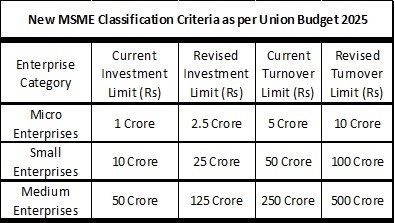Blog
The micro, small, and medium enterprise (MSME) sector has often been hailed as the backbone of India’s economy, driving innovation, fostering employment, and contributing significantly to the gross domestic product (GDP) growth. Yet, beneath this celebrated narrative lies the sector’s perpetual struggle for financial support. With micro-lending emerging as a critical tool to bridge this gap, a series of regulatory shifts and strategic advancements are reshaping the sector, steering it towards resilience and sustainability. This challenge was discussed at a CareEdge webinar titled ‘Exploring MSME Growth and the Evolving Micro LAP Landscape’.
A new regulatory era
The MSME financing landscape has undergone a seismic shift with the introduction of a stricter 90-day default norm, replacing the earlier 180-day standard. While this move aligns with global practices, it has ushered in significant changes for lenders, who now face the dual challenge of adapting to regulatory compliance and ensuring financial accessibility for small enterprises. This transition demands precision and innovation, particularly as many MSMEs operate with unpredictable cash flows.
One transformative solution has been the adoption of digital tools to assess cash flow patterns, enabling lenders to accurately gauge the financial health of these businesses. For example, advanced algorithms now analyse transaction histories and supply chain activities, offering a more comprehensive picture of creditworthiness. These digital advances have proved invaluable in addressing the sector’s hallmark challenge — a lack of formal financial records.
Moreover, lenders are crafting empathetic and tailored recovery models to mitigate the stress of rigid compliance. Personalised solutions, such as phased repayment plans, help strike a delicate balance between meeting regulatory demands and supporting MSMEs through their unique financial journeys. The successful alignment with the 90-day norm highlights the sector’s ability to adapt, yet it serves as a reminder of the vigilance required to maintain momentum.
Profitability in a competitive landscape
For lenders, staying profitable in an increasingly competitive environment is no easy feat. The MSME sector, however, offers untapped potential that can be a game-changer. Recent industry reports reveal that only a fraction of India’s estimated 63 million MSMEs currently have access to formal credit channels, leaving vast opportunities for financial institutions to explore.
The key lies in understanding the complexities of MSME financing. Addressing higher credit costs, for instance, requires nuanced pricing strategies that ensure fairness without compromising margins. A case in point is the willingness of borrowers to absorb moderate interest rate increases — data suggests that even a 3% hike has had minimal impact on demand, allowing lenders to maintain profitability while passing on costs.
Customer-centric execution has also emerged as a vital strategy. By tailoring services to the specific needs of micro-enterprises, lenders are not only fostering loyalty but also creating a competitive edge. For example, non-banking financial companies (NBFCs) offering flexible collateral options have gained significant traction among MSMEs, reinforcing the importance of adaptability in service delivery.
As funding costs show signs of easing, the future holds promising opportunities for higher margins. However, long-term success hinges on a deeper understanding of the sector’s intricacies and a commitment to innovation.
The role of technology in monitoring and growth
Technology has been a powerful enabler in redefining micro-lending. The deployment of account aggregator systems, for instance, has provided lenders with unparalleled visibility into borrowers’ financial transactions. These platforms streamline the end-use monitoring of loans, ensuring greater transparency and accountability.
Yet, challenges remain. While account aggregators simplify access to bank statements, the fungibility of money often obscures the precise utilisation of loan funds. To address this, lenders are continuously enhancing their systems, incorporating machine learning and blockchain technology to improve accuracy and traceability.
Take the example of fintech start-ups partnering with traditional banks to develop blockchain-based loan tracking systems. These collaborations are not only meeting regulatory requirements but are also setting new standards in responsible lending practices. Such innovations highlight the symbiotic relationship between technology and traditional approaches, paving the way for a more robust financial ecosystem.
Harnessing the promise of MSMEs
The MSME sector stands as a beacon of resilience and untapped potential. By embracing regulatory changes, leveraging technology, and addressing the unique challenges faced by micro-enterprises, stakeholders can unlock new avenues for growth and transformation.
For those at the forefront of micro-lending, the message is clear: dive deeper, innovate boldly, and stay attuned to the needs of this vibrant sector. With countless opportunities awaiting exploration, the story of MSMEs is one of determination, dynamism, and an unwavering drive to succeed.
Sector Overview
As of 4 February 2025, the Udyam Portal boasts 5,93,38,604 registered MSMEs, with the vast majority classified as micro-enterprises. Beyond their economic contributions, these MSMEs have created substantial employment opportunities, providing jobs to more than 25.18 crore individuals.
During the financial year 2023-24, the Prime Minister’s Employment Generation Programme (PMEGP) supported 89,118 enterprises, fostering entrepreneurship across various sectors. The scheme disbursed ₹3,093.87 crore as margin money subsidy, helping small businesses scale operations and sustain growth. Consequently, an estimated 7,12,944 employment opportunities were created, reaffirming PMEGP’s role in bolstering self-employment and job creation nationwide.
 Contribution to gross domestic product: The MSME sector contributes approximately 30% to India’s gross domestic product, with micro-enterprises accounting for 97% of the total share.
Contribution to gross domestic product: The MSME sector contributes approximately 30% to India’s gross domestic product, with micro-enterprises accounting for 97% of the total share.
Credit access: Despite their significance, only 2.5 crore MSMEs out of 63.4 million units have accessed formal credit channels. This highlights the untapped potential for micro-lending.
Women entrepreneurs: Women-owned MSMEs make up 38% of registered enterprises, reflecting the growing role of women in this sector.
Export contribution: MSMEs contribute around 45.79% in 2024-25 (up to May 2024) of India’s total exports, showcasing their importance in global trade.
(Write to us at editorial@bombaychamber.com)








